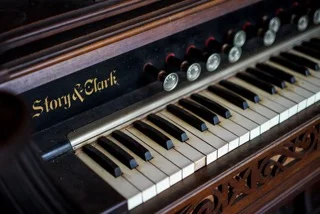In the beginning of May, I moved out to Hurricane with my sleeping bag and some warm(!) clothes for my second season on the island. After packing up last October upon the season’s end, I had been itching to get back to Hurricane. I feel lucky to have been working for Hurricane in a year-round capacity since January, based at the Rockland office, but I had only been out to the island for a few day trips here and there. May meant the start of LIVING on Hurricane, the start of a six month season of teaching on Hurricane and sharing the place with students and visitors alike.
Hurricane at the beginning of May was quiet. I can only imagine how peaceful it felt as our Facilities team of Sam, Oakley, and Silas started working out there in April. The isolation of the island began to shift by mid-May, when I began working with my first overnight school of the season: Cambridge School of Weston (CSW). CSW came to Hurricane for nine days of Marine Biology.
CSW students practice using transect tapes and quadrats in the intertidal zone. Photo courtesy of Scott Byrd.
CSW teacher Marilyn Del Donno has brought students from the Boston-area school for four years. This year, the twelve students were all juniors and seniors in her Marine Biology course. She had done a lot of work with them in the classroom ahead of time, introducing them to marine organisms and key concepts. The goal for the nine days on Hurricane was for each student (or team of up to three) to design and carry out a research project, collecting and analyzing data, before presenting to the Hurricane community. After the trip, the students continued their work, writing formal reports of their studies.
The CSW group set the tone for an awesome 2017 season. The students were inquisitive and polite, studious, and open to new experiences. They brought an energy to the island that was contagious as two more schools, Gould Academy, and the Eaglebrook School, joined the Island community for the latter half of CSW’s stay. The Eaglebrook students, primarily 6th grade boys, attended part of CSW’s project presentations, learning about shell strength of different marine organisms (assessed, of course, by smashing weights on the shells!), and how these shells may be impacted by ocean acidification.
Nereid worm spotted by CSW students during low tide.
In addition to investigating shell strength, CSW students investigated the effects of light and color on zooplankton, tracked the migration of periwinkles and dog whelks, and assessed biodiversity in high, mid, and low-disturbance areas of the intertidal zone. Their thoughtful question-asking and creative approaches to experimental design established a high standard for student projects this season.
I look forward to working with CSW again in 2018, and in the meantime, I hope to carry the positive energy and momentum of the CSW group into the rest of the 2017 season. Our summer interns just arrived on Sunday, and the heart of the season is fast approaching. Stay tuned!








